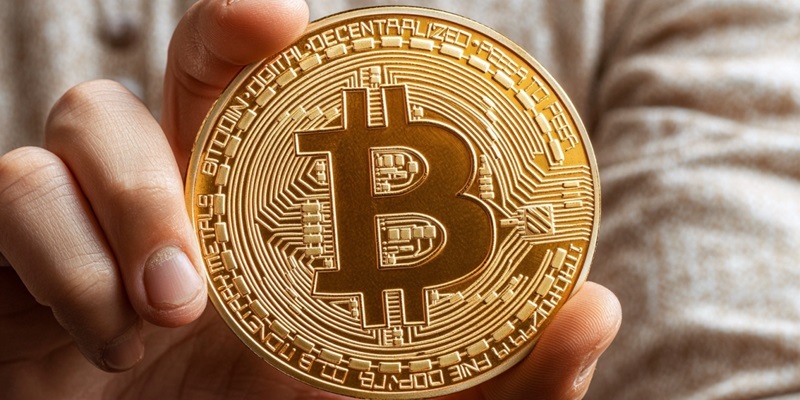The recent surge in gold prices has piqued the interest of investors and analysts, sparking discussions about its implications for Bitcoin and other riskier assets. Gold has reached a new record high of $2,564 per ounce, marking a noteworthy 25% year-to-date gain and a 10% increase in the third quarter. In contrast, Bitcoin has experienced a 7% decline in the same quarter, settling around $58,000. As gold’s performance is closely scrutinized, it raises the question of whether this upward trend could signal future favorable conditions for Bitcoin. While the rise of gold presents an intriguing scenario, Bitcoin’s volatility has led to a spectrum of opinions regarding its future.
Several analysts propose that the factors driving gold’s rally might eventually benefit Bitcoin and riskier assets. André Dragosch of Bitwise notes that gold’s decoupling from U.S. real yields suggests potential scenarios where declining real yields could drive investments into Bitcoin. As gold reaches new heights, Bitcoin remains under the spotlight, with various perspectives aiming to decipher its future trajectory in relation to gold’s performance.
Central Bank Accumulation and Gold’s Rally
One of the primary drivers behind gold’s recent rally is the significant accumulation by central banks. In July alone, central banks bought 37 tonnes of gold, the highest monthly purchase since January. This surge in purchases highlights a growing preference for gold as a reserve asset amid concerns about the stability of fiat currencies. Analysts, including Charlie Morris of ByteTree, suggest that gold’s rise is also influenced by potential future monetary policy easing. With traditional assets like U.S. Treasury inflation-protected securities losing their appeal, gold becomes a more attractive option for safeguarding value. Additionally, structural government deficits and an increasing fiat money supply contribute to gold’s current strength.
The combined fiat money supply from major economies such as the U.S., Eurozone, UK, and Japan turned positive by late August. This hints at potential shifts in monetary policy that could support higher gold prices. As central banks continue to stockpile gold, a trend indicates a strategic shift towards safe-haven assets. Such moves can be seen as a hedge against potential future economic instability and inflation. The historical context lends credence to this strategy, with past instances of economic turbulence bolstering gold’s appeal. The real question remains whether Bitcoin can also emerge as a beneficiary in this macroeconomic landscape.
Bitcoin Under Scrutiny Amid Gold’s Surge
As gold reaches new heights, Bitcoin’s price volatility and performance come under the spotlight. Several analysts propose that the factors driving gold’s rally might eventually benefit Bitcoin and riskier assets. André Dragosch of Bitwise notes that gold’s decoupling from U.S. real yields suggests potential scenarios where declining real yields could drive investments into Bitcoin. Historically, sharp declines in real yields have encouraged investors to seek higher returns in riskier assets like tech stocks and Bitcoin. The relationship between monetary policy, real yields, and asset allocation is crucial in understanding Bitcoin’s potential trajectory in the current economic landscape.
The European Central Bank’s recent interest rate cut, alongside expectations of similar moves by the Federal Reserve, signals an easing cycle. Such monetary easing typically lowers real yields, prompting investors to consider assets like Bitcoin for higher returns. As Bitcoin’s price volatility persists, understanding its unique market dynamics becomes even more essential. The juxtaposition between Bitcoin and gold’s performances underscores the complexity of their relationship. While Bitcoin is often touted as "digital gold," its response to macroeconomic shifts may not mirror gold’s behavior, given its distinct characteristics and market influences.
Central Bank Strategies and Investor Behavior
Central banks’ significant purchases of gold reflect a strategic shift that could influence broader investor behavior. As central banks favor gold, there is a potential spillover effect on how institutional and retail investors view Bitcoin, given its store-of-value proposition akin to gold. Historical patterns suggest that when central banks signal an easing policy, it typically leads to increased stimulus and liquidity in the markets. This environment is conducive to the growth of riskier assets, including Bitcoin. The narrative of Bitcoin as "digital gold" gains traction, especially as central banks accumulate gold and prepare for future monetary easing. However, some analysts, such as Alex Kruger from Asgard Markets, caution against overinterpreting gold’s rally as a surefire indicator for Bitcoin. Gold and Bitcoin have unique market dynamics and investor bases, which means their price movements may not always correlate directly.
An in-depth analysis of historical trends indicates that while central bank behavior significantly impacts gold prices, Bitcoin’s market reactions are often driven by a different set of factors. For instance, Bitcoin’s appeal as a store of value extends beyond traditional financial markets, encompassing a tech-savvy demographic that values decentralization and digital currency’s potential. Therefore, while the gold rally provides clues, Bitcoin’s distinct ecosystem requires careful consideration of technology trends, regulatory developments, and investor sentiment. Central banks’ strategies and investor behavior reflect a complex interplay that can influence both assets, albeit in different ways.
Market Volatility and Divergent Perspectives
The recent surge in gold prices has caught the attention of investors and analysts, fueling conversations about its potential impact on Bitcoin and other riskier assets. Gold has soared to a new pinnacle of $2,564 per ounce, boasting an impressive 25% gain year-to-date and a 10% increase in the third quarter. Meanwhile, Bitcoin has seen a 7% decline in the same quarter, hovering around $58,000. This divergent performance raises the question of whether gold’s upward momentum might eventually create favorable conditions for Bitcoin. Even though gold’s rise presents an intriguing narrative, Bitcoin’s inherent volatility leads to varied opinions about its future.
Some analysts suggest that the drivers behind gold’s rally could ultimately benefit Bitcoin and other high-risk assets. André Dragosch from Bitwise points out that gold’s detachment from U.S. real yields indicates scenarios where decreasing real yields might push investments into Bitcoin. As gold hits new records, Bitcoin remains a focal point, compelling analysts to explore its future path in relation to gold’s ongoing performance.

